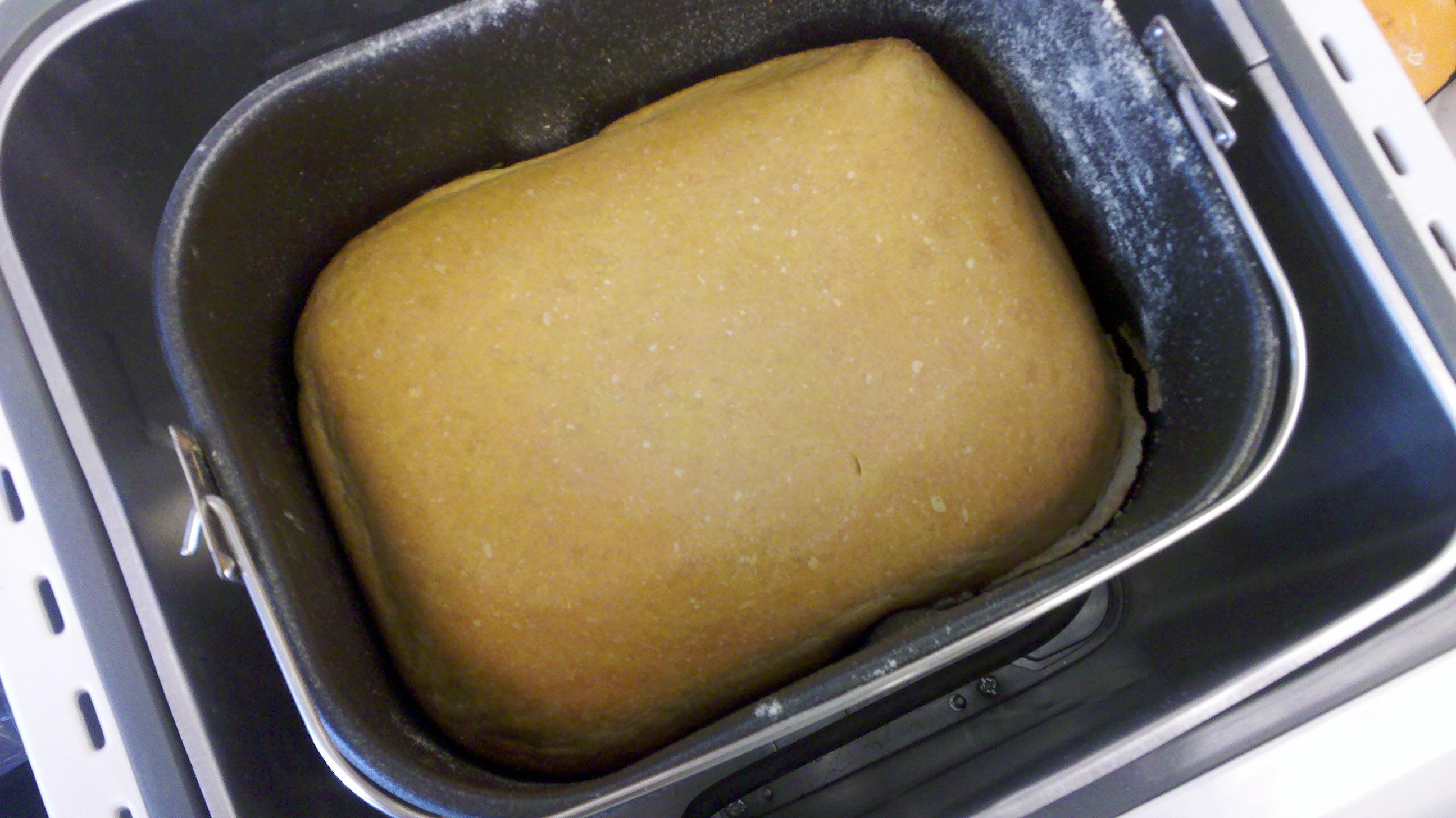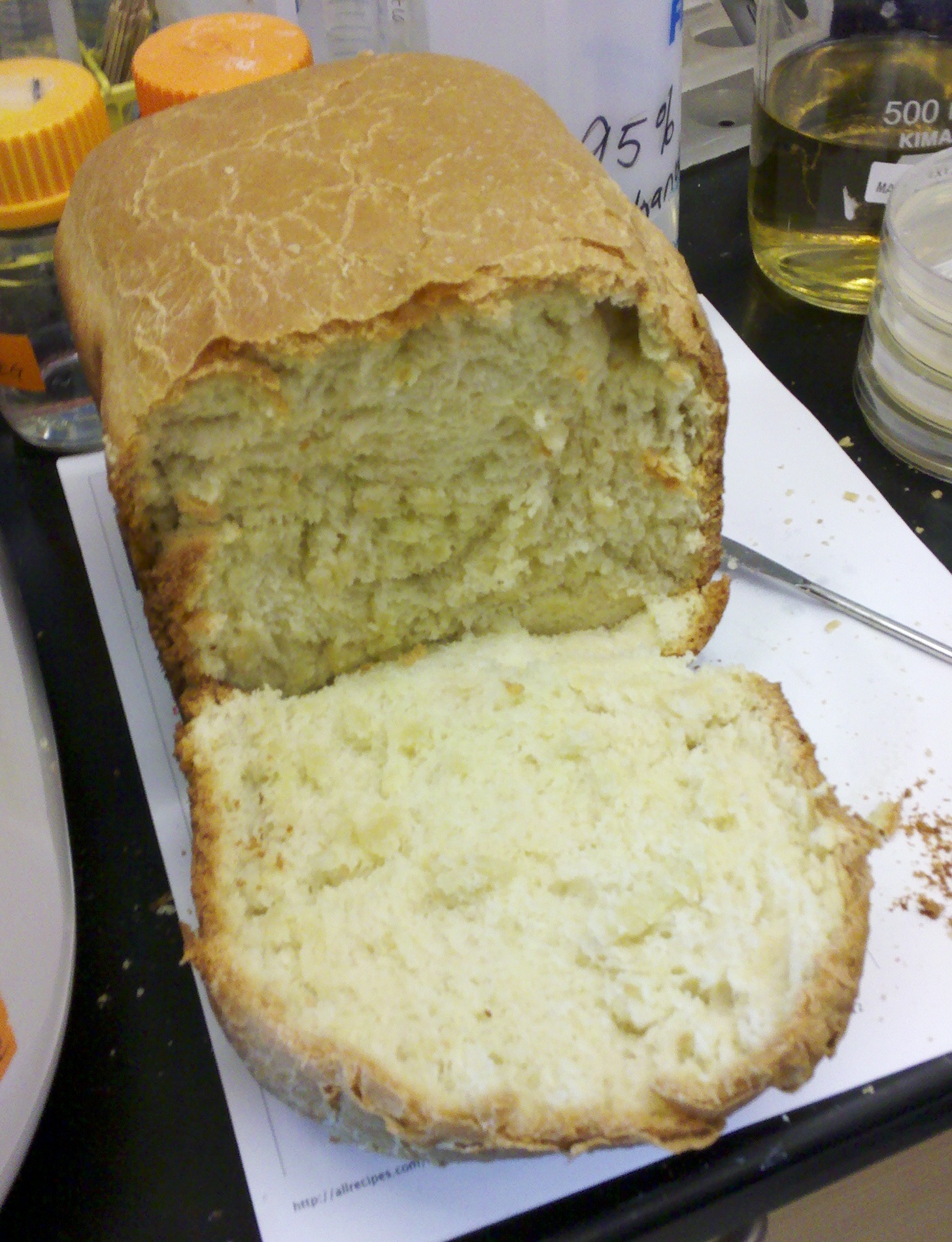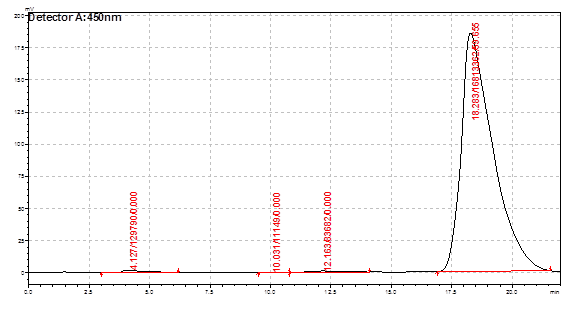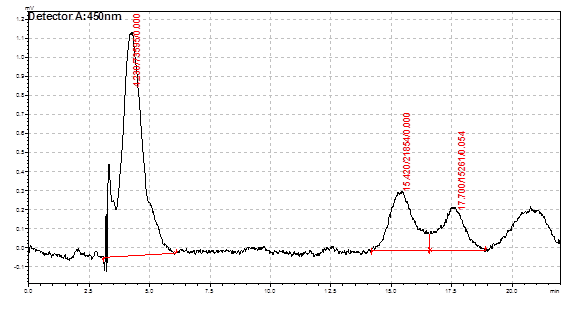Baking Vitabread
Part of our Vitayeast project was to see if we could use our yeast in the applications we envisioned. We decided to bake bread out of the Vitamin A strain of yeast.
Finding the OD of Dry Active Yeast (Store-bought Yeast)
See protocol here.
9/13/2011
Using the spectrometer, we calculated the following ODs:
| A600 (1/100 concentration) |
| 0.171 A |
| 0.080 A |
| 0.290 A |
Average: 0.180
0.180x100 = 18 OD/ml
18 OD/ml * 350 ml = 6312 OD/loaf
The values for this OD were inconsistent, so a second batch of OD was taken.
| A600 (1/50 concentration) |
| 0.328 A |
| 0.360 A |
| 0.377 A |
Average: 0.355
0.355x50 = 17.75 OD/ml
17.75 OD/ml*350 ml = 6213 OD/loaf
This is about 650 colonies.
Measuring the OD of a Lawn of Vitamin A Yeast
9/14/2011
We had a lawn of Vitamin A yeast grown out, so we decided to see what the OD of a lawn of this yeast on a plate would be.
| A600(1/200) |
| 0.206 A |
| 0.230 A |
| 0.206 A |
Use the value 0.206.
0.206 OD/ml*200 = 40 OD/ml x 17 ml = 680 OD/lawn of Vit A Yeast
If we want a 1:1 ratio of Vitamin A yeast to dry yeast, then we would need 9.1 plates. This weighs 0.68 g. Sources on the internet say that the ratio of fresh yeast to dry yeast in bread baking should be 1:2. If this is true, then you need 14 grams, which is 26 small plates.
Growing Vitamin A Yeast for Bread
9/15/2011
We decided to grow up the yeast cells in culture in multiple 500 ml Erlenmeyer flasks and also grow the wild type of that yeast strain (CEN.PK) for benchmarking purposes. There are three flasks of the Vitamin A yeast and WT each, with 250 ml of YPD media in each flask, and OD measurements were taken to see how concentrated the cultures were.
9/16/2011
After one day of incubating those flasks, we took the OD.
0.435 OD/ml * 20 = 8.7 OD/ml * 750 ml = 6525 OD for all three flasks. This means that the total weight would be around 6.5 g.
We decided to let the yeast incubate further in culture.
9/17/2011
| A600(1/50) |
| 0.386 A |
| 0.388 A |
| 0.426 A |
Average: 0.400 OD/ml.
0.400 OD/ml * 50 = 20 OD/ml * 750 ml = 15000 OD for all three flasks. This means that the total weight is around 15 g.
The cells were then placed in a cold room.
9/19/2011
The OD was remeasured, this time for both the WT yeast and the Vitamin A yeast.
| WT yeast | Vitamin A yeast |
| A600(1/50) | |
| 0.334 A | 0.427 A |
| 0.291 A | 0.426 A |
| 0.396 A | 0.383 A |
Average for WT yeast: 0.3403 OD/ml
0.3403 OD/ml * 50 = 17 OD/ml * 750 ml = 12762.5 OD for all three flasks of WT yeast.
Average for Vitamin A yeast: 0.412 OD/ml 0.412 OD/ml * 50 = 20.6 OD/ml = 15450 OD for all three flasks of Vitamin A yeast
We decided to test out the Vitamin A yeast for baking, finally.
The 20.6 OD/ml translated to about 0.02 g/ml of yeast. We need 14 grams of lab yeast to bake, so this means that we would need 700 ml of the lab yeast to do so.
We spun down the yeast cells from 700 ml of the cultures and used them to bake in the bread machine. We used the same recipe that we used earlier to bake regular bread.
The final product was made after three hours, and the lab smelled amazing!
Quantifying beta carotene in Vitabread
9/25/2011 - 9/30/2011
Extracted beta carotene from bread baked with Vitayeast, wild type yeasts, and a positive control.
Positive control bread was spiked with 35mg of standard beta carotene before baking.
Extraction procedure:
1. Homogenize 20g of bread with 4ml of water
2. Solubilize with 46ml of extractants, hexane:acetone:ethanol (10:7:6 v/v)
3. Saponify with 8ml of KOH in methanol (40:60 v/v) for an hour.
4. Add 37ml hexane:toluene (30:7 v/v)
5. Take clear phase at the top layer, evaporate, and run HPLC analysis
The procedure for HPLC analysis was similar to that used for quantifying beta carotene in yeast extracts. Comparison between all extracts showed the presence of beta carotene in bread baked with Vitayeast.
 "
"






